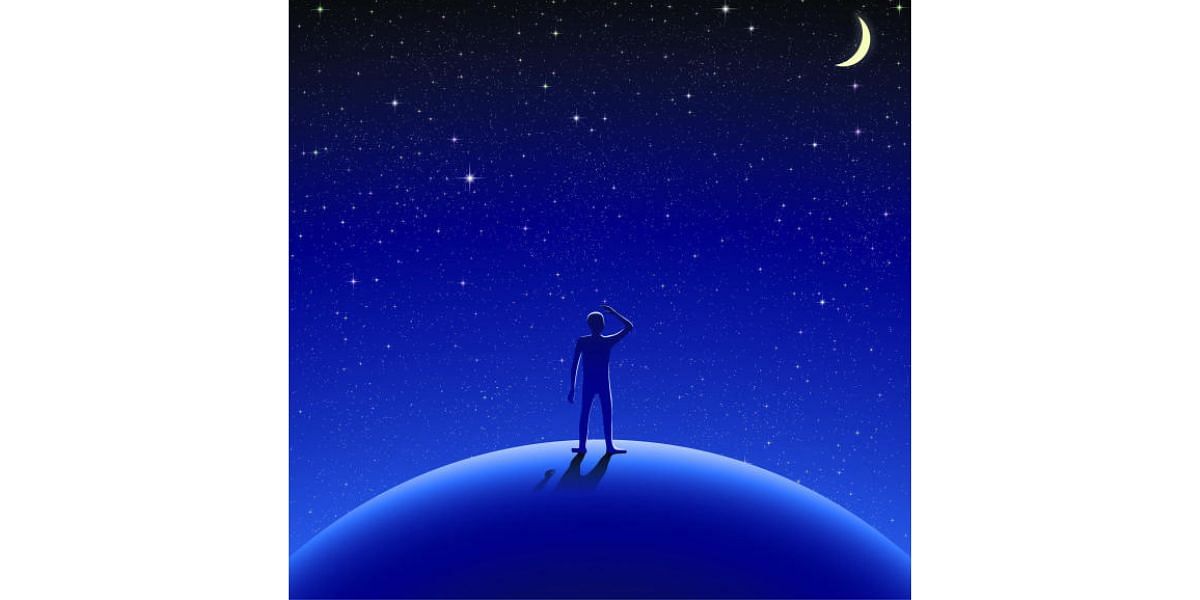
Have you ever gone on a visit to the mountains and then sat outside on a clear night and looked up into the sky? Dazzling, isn’t it? We, who live in the city, often miss the glory of space — a few stars here and there are often about all we get to see — but “space, the final frontier” is a fascinating place to explore as anyone who has visited a planetarium will agree.
Let’s get a few things straight first. What do we mean when we say the ‘universe’? The universe includes everything we know. The planets, the galaxies and all that comes in between or that exist on them. When we talk about astronomy, we are talking about the study of celestial objects — the galaxies, the stars, the planets, the asteroids, the comets and the black holes.
For observing a lot of this in any amount of detail, we need telescopes (the more powerful the better) but some of it we can see with our own eyes. Who has not seen Venus twinkling brightly on a dark, still night?
Scientists believe that the universe came into existence about 14 billion years ago when something dense and hot began to expand creating all the objects that we now see in space. This is called the Big Bang theory. And guess what? The universe is, apparently, still expanding!
Each galaxy, within the universe, is a collection of celestial objects such as stars and planets, asteroids and other matter. Everything within a galaxy is held together by a gravitational force, similar to the gravitational force that holds our solar system together. We are part of the Milky Way galaxy that contains about 250 billion stars. The galaxy closest to us, the Andromeda galaxy, has roughly one trillion stars. Galaxies can be elliptical, spiral, barred spiral, or irregular.
As with all stars, our Sun too is a huge ball of gas that burns bright and (as you can imagine) is very, very hot. Estimates say that the Sun is at the mid-point of its life, having burned steadily for about 4.5 billion years.
We currently believe that there are 8 planets revolving around our sun. There were thought to be 9 until the recent elimination of Pluto which didn’t conform to the fairly new definition of a planet and is now considered a dwarf planet. Planets are objects that are large enough to become rounded by their gravitational orbit around the Sun and also large enough to have cleared its orbit of other objects. Pluto isn’t quite large enough to be the playground bully!
Mercury rotates slowly and takes 58 Earth days to rotate once though its year is just 88 Earth days on account of having a much shorter route to cover in its journey around the sun. Surprisingly, Mercury isn’t the hottest planet. That’s Venus. It’s approximately Earth size and similar to Earth in geography but much too hot for a spaceship to land on.
On Earth’s other side is Mars which is called the red planet on account of the thick layer of iron oxide that covers it. It appears that there once was water on Mars but it now exists only as ice there.
The last 4 planets in our solar system are known as gas giants because they are made up of gas and don’t have a solid surface. Jupiter is 318 times the size of Earth and spins so fast that a day there is a mere 10 hours.
At number 6 in the solar order, comes Saturn with its rings. This planet is so gaseous that if we could drop it into a bowl of water, it would float! Saturn spins so fast that it is slightly out of shape. The rings are made of dust, ice and rocks. Uranus is the smallest of the gas giants although it’s 14.5 times as big as Earth. And lastly there’s Neptune which takes 164 Earth years to go around the sun just once.
We can’t talk about astronomy without saluting the great Galileo Galilei who told us so much about them way back in the 16th century and very nearly died for his beliefs. The moons of Jupiter or the rings of Saturn were one thing but to dare to say that the Earth revolves around the sun?! Shut up!
(The author is a writer and a soft skills and communications trainer.)